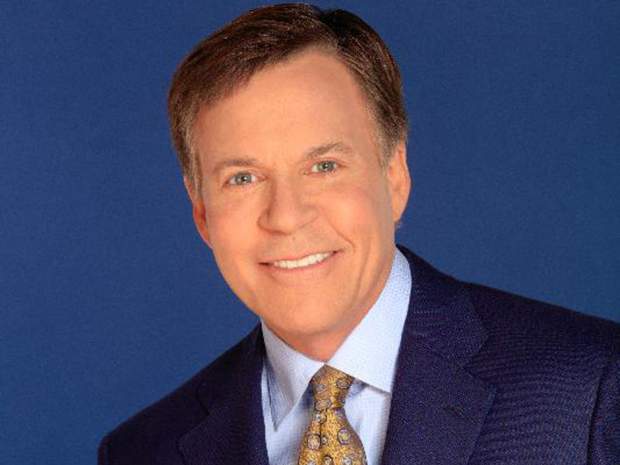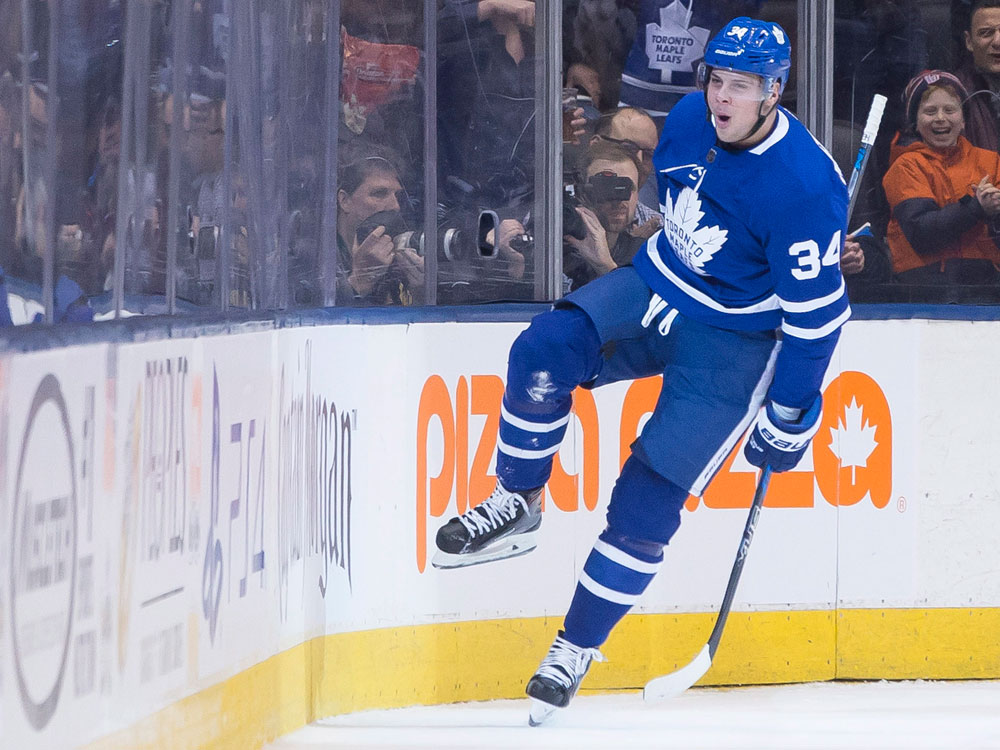Sports
NBC’s Bob Costas is the steady hand amid Olympic chaos

NEW YORK — The Olympics are a torrent of names, stats, narratives, results, commercials, montages and trivia about Kenyan runners and Italian fencers and Slovakian shot putters. It is overwhelming.
NBC televised about 172 hours during the 1996 games in Atlanta. In Rio de Janeiro this month — if you count every media platform — the total will be 6,755 hours.
That’s 281 days’ worth of stuff crammed into about two weeks. And 20 million people will tune in each night to see glory and hope and triumph and failure and clamor and drama and Bob.
Bob, at the center of it all. Bob: the steadying force, the moderator of mayhem, the synthesizer of sensory overload.
What about Bob Costas?
He’s here on the Upper West Side in mid-July, and the patio of this hip bistro is too crowded for him. He calls to say so. He sees his questioner scrunched between Sunday brunchers and, you know, we don’t need the noise and distraction. Why don’t we eat next door?
He’s already got a table outdoors at an old-school Italian cafe where the waiters say “grazie.” He’s virtually the only person there, facing Broadway, wearing a navy cap embroidered with “the Spirits of St. Louis,” the basketball team that launched his career as a radio sportscaster in 1974, when he was 22 — the nation’s youngest play-by-play announcer for a pro team.
The former boy wonder, who once looked like he was picking your daughter up for prom, is now a 64-year-old poobah who’s about to anchor his 11th Olympics. For the next 16 days, he is the anchorman of Planet Earth.
“I’m starting to get ‘I’ve been watching you all my life,’” Bob says over the horns and brakes on Broadway. “And it used to be I was the irreverent newcomer.”
He’s aged, sure, and yet retains a freshness, like maybe he’s had …
“You know what the answer is?” Bob says. “Lighting. OK? I’m sitting right here. I have wrinkles, OK? Lighting. Thank you.”
Bob is so considerate of all angles, so careful with every word, that he’d come across as calculating if he weren’t also blunt and talkative. A one-hour brunch with him takes two hours. He chats with the vigor of someone who is put in storage between each Olympiad with no one to talk to about sports and life. He orders an omelette with tomatoes, spinach and a little bit of mozzarella, and then salts the hell out of it. In person, there’s more Long Island in his voice. He is short. His teeth are as orderly as his sentences.
What about Bob, Bob?
“I don’t know that I’m on the 18th, but I’m definitely on the back nine,” he says of his career. “I’m around the 14th or 15th hole. And I hope I’ve birdied a few. Maybe I’ve bogeyed a few.”
When he was 10, Bob was his father’s driveway correspondent in Commack, New York, just off the Long Island Expressway. He was dispatched to the family car to fiddle with the radio dial, hunting for WKDK in Pittsburgh or WBAL in Baltimore, listening for the scores to games that his father had put money on but couldn’t monitor from the television set.
“When the rent is riding on whether Whitey Ford can get Al Kaline out, or Wilt Chamberlain can make two free throws — that’s a little anxiety-provoking,” says Bob, who reported the scores to his father by recapping the action with a flourish. An announcer was born.
Then came Syracuse University and St. Louis, where he maintained a residence until 2011, when he moved full time to New York to be near his grown children. For a couple of decades, Bob occupied people’s living rooms: He did play-by-play for the National Basketball Association and the National Football League and the U.S. Open and the Kentucky Derby and Major League Baseball, he guested on “Larry King Live” and “Today,” practiced longform broadcasting on network news magazines and talk shows on HBO – and he became synonymous with the Olympics, starting with his first appearance in 1988 in Seoul.
“What I’ve learned through the years is that the host of the Olympics needs to be a good generalist,” he says. “So it’s a waste of time to memorize every platform diver from Lithuania. It’s a waste. Of. Time.”
But if a Lithuanian platform diver suddenly becomes a sensation, Bob will seem like he has studied the Baltics all his life. Nimble researchers, just off-screen, will make him seem omniscient.
Bob is not omniscient. But he is a quick study and a sports encyclopedia. He is also a bit rebellious, self-deprecating and obnoxiously unflappable. At the Belmont Stakes in 2011, someone threw a can of beer at him, and he caught it one-handed, opened it, chugged some, lobbed it back from the victory stand, and proceeded with his interview of the winning jockey and trainer.
“He’s got that assured – that sort of slow walk,” says NBC’s Mary Carillo, whom Bob coaxed into taking a shot of vodka on live TV in Sochi. “He’s in control.” They toasted his severe eye infection, which had dominated the Olympic news cycle.
“Tomorrow morning I’ll be lying on a curb in Minsk!” quipped Bob, eyes ablaze with germs, as he stamped his glass down, and Carillo couldn’t contain her incredulous laughter.
“He’s keenly aware of whatever subject matter is in front of him,” Carillo continues by phone, “and he’s got this incredible retention of facts, of times of day, of moments when it all fell apart, moments when it all coalesced.”
Bob is exacting, direct and doesn’t suffer fools.
Might he also be a jerk?
“I’m pretty outspoken,” says his friend, journalist Buzz Bissinger, “so if he was an a——, I’d tell you.”
Bob is not an a——. He’s more of a traffic cop who speaks with the voice of God. “Your eyes are kind of darting from thing to thing,” he says of his Olympics role, “trying to make sure you understand where Simone Biles is in her rotation.”
It’s tempting to call Bob the Dick Clark of the Olympics — a mannequin wheeled out for an occasion that he now embodies — but that would insult his journalistic credentials.
Bob pushed for coverage of human-rights abuses in Beijing against NBC’s then-owner General Electric, which does plenty of business in China.
He shamed the International Olympic Committee, on air, for refusing to grant Israel a moment of silence on the 40th anniversary of the Munich massacre in 2012.
When Ukrainians reached the podium at the Sochi games in 2014, Bob brought up Russian President Vladimir Putin’s imperialism: “No amount of Olympic glory can mask those realities any more than a biathlon gold medal – hard-earned and deeply satisfying as it is – can put out the fires in Kiev.”
During NFL half-time commentaries, Bob has opined on concussions, the Washington Redskins name, and the intersection between gun culture and the murder-suicide involving Kansas City linebacker Jovan Belcher — which triggered sharp blowback from fans who wanted Bob to call the action on the field, not off it.
“They should’ve either given me more time or deferred it by a week,” says Bob, who considers his simplistic commentary on guns to be the one big bogey of his career. “Generally I have two minutes. … Here I had a minute. And it would’ve been better to leave it alone rather than go into it for a minute.”
Bob can turn an interview into an inquisition. He skewered Penn State assistant coach Jerry Sandusky in 2011 (“Are you a pedophile? Are you sexually attracted to underage boys?”) and nearly questioned his way to a physical confrontation with wrestling impresario Vince McMahon in 2001 (“Do you think in some way this type of programming contributes to … the incivility and coarseness that’s generally out there in the culture now?”).
Bruce Cornblatt produced the McMahon segment, for HBO’s “On the Record With Bob Costas,” and was nerve-racked as McMahon, riled up, inched closer and closer to Bob, who was as stoic as ever.
“Everything about television for Bob — no matter what he’s doing — slows down,” says Cornblatt, now a senior producer at the MLB Network, where Bob is a host and announcer. “Great athletes have that happen too: (Time) just slows down,” which allows Bob to be agile and reflexive.
“Later With Bob Costas,” a late-night show that Bob hosted on HBO from 1988 to 1993, was a playground for a generalist. Bob interviewed the likes of Martin Scorsese, Paul McCartney, Camille Paglia, Dan Rather and Van Halen, but he was at his best, according to Cornblatt, opposite “Zorba the Greek” actor Anthony Quinn in 1991. Bob knew that Quinn, then 76, had never spoken publicly about his son, who had drowned 50 years earlier at the age of 2. Bob did not ask Quinn about it directly, but with Olympian finesse, he got his answer anyway.
“There’s a scene in ‘Zorba’ where he’s lying on his back,” Bob said to Quinn, “and looks up at the British guy, who he’s trying to teach the gift of life to — the gift of living life — and he says: ‘When my son Dimitri died and everyone was crying, I danced.’ ”
Quinn, realizing what Bob was doing, blinked and inhaled, folded his arms, looked at the ground. Bob pressed on, delicately.
“‘And they thought I was mad,’” he continued, quoting Zorba. “‘They said: Zorba’s mad. But it was only when I danced that the pain stopped.’ Is that true, for you, in life?”
Quinn, tears in his eyes, had been disarmed by a perfectly worded and executed question.
“You’ve been very nice,” Quinn said. “So I’ll confess to you that I live with the pain of having lost a son. And there’s no greater pain in the world. And you never get over it. And to me, he’s not gone. I imagine him living in San Francisco, being a very successful architect. And I just never accepted death.”
A good journalist can go his whole life without summoning such a quote.
The ability to do so rests in a word that Bob keeps using during this two-hour brunch. He uses it when describing what he loves about St. Louis. He uses it while lamenting the polarized, post-factual world of politics and media, in which everything is noise, in which profound truths can be overtaken by a pink-eye meme. He uses the word to address a question about unfulfilled aspirations. The word is “texture.”
“To me, what you hope for is texture,” he says of his work. “Just take baseball. If someone says ‘Bob’s view of baseball is nostalgic,’ that’s a portion of the truth. If they say, ‘Well I thought he liked baseball, but he’s always talking about the economic disparities or steroids’ — well, that’s part of it, too. You can draw a stick figure. Or you can try to paint a picture that has some shadings, that has some texture to it.”
And so Bob spends the weeks before Rio in an undisclosed location, studying for the Olympics, making sure he knows names, years, weights, distances, personal records, intimate backstories. He’ll make sure he knows about the geography of Rio, the structure of its government, its struggle with sanitation and security and embattled Brazilian President Dilma Rousseff — all so he can deliver that texture he prizes in this glossy, harebrained world.
Jim McKay, who covered 12 Olympics for ABC, was doing spots from the Games into his 80s. NBC has the rights to every Olympics until 2032, when Bob himself will be 80 years old.
Bob says: “I hope I’m alive and coherent in 2032.” He pauses for the wail of an ambulance to pass on Broadway. “So that I can enjoy watching someone else host it.”
Sports
Up and Coming Sports Stars to Look Out for in 2020
Every year, a raft of exciting new players come onto the scene across all of the major US sports. With the MLS season getting underway and the NFL and MLB drafts not too far away, now is a great time to look at the young sports stars that could have a very bright future ahead of them, and the ones that are already proving they are destined for greatness.
Theo Bair (MLS)
This MLS season is looking like it could be one of the best yet, with David Beckham’s Inter Miami team adding some extra dazzle to the league. Whilst Beckham might be able to attract a lot of new players to his MLS team, there are a lot of young stars on their way through such as Theo Bair at Vancouver Whitecaps. Bair has already made an impact on the first team and after impressing at under-20 and under-23 level for the national team, he has made two appearances for the senior team, well before his 21st birthday. This year could see Bair make a real name for himself in the MLS.

Source: Pixabay
Vladimir Guerrero Jr. (MLB)
Montreal-born Vladimir Guerrero Jr has one MLB season under his belt but it looks like the best is still yet to come from him at the Blue Jays. He was heavily backed to take the league by storm but he failed to live up to the hype that surrounded him. Without the pressure of being the top-ranked prospect, this season could see Guerrero play with some weight lifted off his shoulders. He has been working very hard on his fitness over the offseason, something that his manager Montoyo has been quick to comment upon.

“Baseball” (CC BY 2.0) by andrewmalone
Connor McDavid (NHL)
McDavid has already established him as a top hockey player but at 23, he has the potential to go on to do so much more. The player was born in Ontario and was the first overall draft pick, showing how much expectation was already on him at that stage but he has gone on to prove that he is one of the best players in the NHL. McDavid could go on to be one the NHL’s best-ever hockey players and this season could be the year that he shows the world, not just the NHL.
Chuba Hubbard (College Football)
The Oklahoma State Cowboys running back has been making the headlines for several years now. He continues to improve and grab more attention for his impressive stats and performances. He was close to being a sprinter and nearly made the Canadian Olympic team before switching over to football. He is passing up the 2020 NFL draft to play his senior season at Cowboys. He should give them a good chance of winning the College Football Championship, though they’re trailing at the seventh spot in the latest American football odds at +2400.00, with Clemson as the current betting favorites.
2020 will definitely be a very exciting time with some of these young stars looking to breakthrough in their respective sports and show the world what they are capable of.
Sports
Bob Baffert is back at the Kentucky Derby – and looking to break the Curse of Apollo

Bob Baffert is back at the Kentucky Derby with early favourite Justify after watching the race from his sofa in Southern California last year.
The Hall of Fame trainer’s ability to produce Derby contenders year after year is an enviable feat and why his absence a year ago stood out. It was just his second since 2009 and occurred because his lone candidate got hurt.
Baffert will saddle Justify and 30-to-1 shot Solomini in Saturday’s Derby.
Justify is one of the greenest colts Baffert has brought to Churchill Downs. He’s won all three of his starts by a combined 19 lengths. If Justify wins, he’d be the first to do so since Apollo in 1882 without racing as a two-year-old.
“The thing about the Kentucky Derby, you have to have the right horse. It just happens. You can’t force it,” Baffert said. “All of a sudden, you have good horses and you’re there. So I’ve been really fortunate to have some really good horses.”
Baffert’s four victories are tied for second-most in Derby history. He’s finished second three times, too, including in 2012 with Bodemeister, also the last time he had two starters in the same year.
Like Justify, Bodemeister didn’t race as a two-year-old. He set a blistering pace and led the Derby until the final 150 yards when I’ll Have Another overtook him to win by 1 1/2 lengths.
Magnum Moon, the 6-to-1 third choice, also is unbeaten and didn’t run as a two-year-old.
“It’s going to happen,” Baffert said, referring to the curse being broken. “Whether it happens this year or whatever, but it will happen because Bodemeister almost got away with it. But I don’t really worry about that.”
Baffert almost had a third starter this year until McKinzie developed a hind-end issue that knocked him off the Derby trail.
“When McKinzie got hurt, I wanted to throw up,” he said. “I really think McKinzie would probably be second choice here. We’d really have a 1-2 here.”
Justify cleared the biggest pre-Derby hurdle by drawing the No. 7 post. Jockey Mike Smith can use the colt’s early speed to position him well for the long run to the chaotic first turn. Solomini ended up in the No. 17 post; no horse has ever won from there.
Baffert turned 65 in January, making him eligible for Medicare and retirement at most other jobs. However, he entertains no such thoughts.
“I work hard at it. I just don’t give up,” the white-haired trainer said. “I’m constantly meeting people. They’re sending me horses. If you don’t have success, you’re not going to get those opportunities.”
After a successful run in the quarter horse ranks, Baffert switched to thoroughbreds. He started with one horse.
“After 25 years, I’m finally getting horses that I don’t have to buy,” he said. “The big guys are sending me horses.”
None was bigger than American Pharoah in 2015. The colt swept the Derby, Preakness and Belmont to become racing’s first Triple Crown winner in 37 years.
Baffert has compared Justify to American Pharoah, citing the colt’s imposing physical presence and big stride. Still, Justify has yet to encounter the kind of traffic the Derby’s 20-horse stampede creates and the talent as he’ll run against on Saturday.
“I’d rather have a really talented horse than one who’s seasoned and just on par with the rest of them,” Baffert said.
Early on, Baffert knew Justify had the goods.
“The first time I worked him at Santa Anita, I knew he was a really good horse,” he said. “The track was really deep that morning, and he went around there effortlessly. His first race, he ran incredibly and showed how special he was.”
That kind of intuition is what separates Baffert from his rivals, fellow Hall of Famer trainer D. Wayne Lukas said.
“Bob’s got a great feel for it,” he said.
Sports
Matthews ready to return to Maple Leafs lineup after missing a month

NASHVILLE — The hurtin’ tune that Auston Matthews has been singing for the past four weeks finally can be put in the remainder bin in Music City.
The Maple Leafs’ top centre on Wednesday declared himself set to return to the lineup after recovering from a right shoulder injury.
Wonderful timing, of course, considering the Leafs will take on the No. 1 club in the National Hockey League, the Nashville Predators, on Thursday night.
“In my mind, I think I’m ready to go and taking it as I’m getting ready to play (Thursday),” Matthews said after resuming his normal role, between William Nylander and Zach Hyman, during practice at Bridgestone Arena.
“It felt good, nice to get in all the reps and everything. (Wednesday) was a good step forward in that process, going through the line rushes.”
It seemed probable that the Leafs also will have defenceman Nikita Zaitsev, who missed the past five games as he recovered from an illness, against Nashville. Zaitsev was paired with Jake Gardiner, his regular partner, at practice.
For Matthews, it has been 10 games as a spectator with his latest injury, his third of the 2017-18 regular season after he missed four games in November with a back issue and then sat for six in December because of a concussion.
Thursday will mark four weeks since Matthews was hurt when he was sandwiched by the New York Islanders’ Cal Clutterbuck and Adam Pelech in a game at the Air Canada Centre.
A major bonus for Matthews in his recovery has been the fact he has been able to skate though much of his recuperation. That was not the case when he was out with his previous two injuries.
It’s worth noting that Matthews scored two goals versus the Montreal Canadiens upon returning on Nov. 18 from his back injury; in his first two games upon coming back from a concussion, he scored a goal in each.
Mike Babcock said a final decision on the participation of Matthews and Zaitsev against the Predators would be made on Thursday morning, but the Leafs coach was talking as though it would be a rubber stamp.
“This is going to be the best opportunity for (Matthews) because he has been able to skate and compete,” Babcock said. “The other times he was not able to do anything.
“To get him back … it’s still going to be going way faster than he has been practising, so there is going to be an adjustment period, but he’s a good player and he will figure it out.”
Defenceman Morgan Rielly didn’t think Matthews will take long to find his footing. Rielly missed six games in late January/early February with an arm injury, so knows what Matthews could be feeling.
“You’re nervous and you just want to get back into it,” Rielly said. “You play your first shift a bit hesitant, but after that it’s important you get back to yourself.
“It’s never easy, but Auston is one of those guys that I will imagine it won’t take long for him to get back into a rhythm.”
And there’s the trickle-down effect through the forward lines with Matthews in uniform.
“Guys are used to playing with certain players and when everyone is healthy, I think you get better chemistry throughout the entire lineup,” centre Nazem Kadri said. “Certain guys don’t have to play with different guys constantly and it’s just more of a set group, so I think it’s going to help us.”
-

 Lifestyle9 months ago
Lifestyle9 months agoOntario Line subway construction permanently shuts down beloved Toronto bakery
-

 Business9 months ago
Business9 months agoThe Canadian Armed Forces are hiring for several non-combat military jobs
-

 Business9 months ago
Business9 months agoPorter’s new loyalty program promises to match Air Canada’s Aeroplan status
-

 Business9 months ago
Business9 months agoPeople call out Sobeys for ridiculous prices after another expensive find at Ontario store
-

 Lifestyle9 months ago
Lifestyle9 months agoWoman crashes car and runs around highway with bottle of booze on typical day in Toronto
-

 Business9 months ago
Business9 months ago‘Here, everything feels much closer’: Entrepreneur says leaving Toronto for Innisfil good for business
-

 Lifestyle9 months ago
Lifestyle9 months agoCanada considers capping international student visas to address housing crisis
-

 Business9 months ago
Business9 months agoBeauty Week is back at Hudson’s Bay in Toronto and it’s time to get glam




